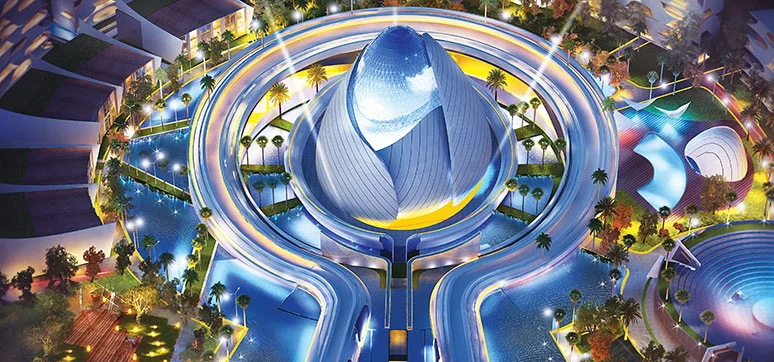In the realm of commercial architecture, facade lighting serves as a powerful tool to enhance the visual impact and nighttime allure of buildings. It illuminates the exterior surfaces, highlighting architectural features, branding, and creating a captivating ambiance. This article delves into the diverse range of facade lighting techniques commonly employed in commercial buildings, showcasing their unique characteristics and the transformative effects they bring.
Accent Lighting
Accent lighting focuses on illuminating specific architectural elements or features to create a dramatic effect. By strategically placing lights at key locations, such as columns, sculptures, or intricate designs, the building’s unique attributes are emphasized. This technique adds depth, dimension, and visual interest to the facade, drawing attention to specific areas and creating a focal point. Accent lighting can be achieved using spotlights, floodlights, or even concealed lighting fixtures, depending on the desired effect and the building’s design.
Wall Grazing and Washing
Wall grazing and washing techniques involve illuminating the vertical surfaces of a building to highlight its texture, patterns, or color. Wall grazing creates a striking effect by placing lights close to the surface, casting shadows and emphasizing the building’s contours. On the other hand, wall washing floods the surface with light, creating a uniform glow and showcasing the building’s sheer scale. These techniques are commonly employed to showcase textured materials like stone, brick, or wood, as well as to create a sense of uniformity and elegance across the facade.
Silhouette Lighting
Silhouette lighting aims to outline the shape and form of a building, creating a stunning visual silhouette against the night sky. By placing lights behind the structure or at the building’s edges, the outline is illuminated, providing a striking contrast between the illuminated structure and the surrounding darkness. Silhouette lighting is particularly effective for buildings with unique or iconic shapes, enabling them to stand out and leave a lasting impression. This technique is often used for contemporary and modern architectural designs, creating a bold and visually captivating effect.
Dynamic Lighting
Dynamic lighting offers a dynamic and interactive experience, allowing for the transformation of the building’s facade through changing colors, patterns, and effects. With the help of advanced lighting control systems, dynamic lighting can be synchronized with music, special events, or even seasons, creating an immersive and captivating display. This technique is highly versatile, allowing buildings to adapt their appearance and ambiance to suit different occasions and moods. Dynamic lighting is commonly used in entertainment venues, hotels, and retail spaces, enabling them to showcase their vibrancy and create memorable experiences.
Conclusion
Facade lighting serves as a potent tool to transform the nocturnal landscape of commercial buildings, turning them into awe-inspiring structures. Whether it’s accent lighting to highlight specific architectural features, wall grazing and washing to emphasize textures, silhouette lighting to outline forms, or dynamic lighting for interactive experiences, each technique brings a distinct personality and allure to the building’s exterior. By carefully selecting and implementing these lighting techniques, commercial buildings can truly come alive at night, leaving a lasting impression on visitors and passersby.




